Donna Williams Diagnosis Controversy
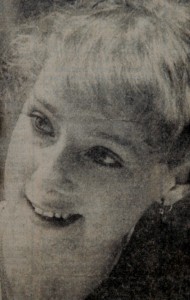 Given autism is a lifelong disability/difference, if someone with autism makes a significant level of progress it is natural to wonder if they could ever have ‘really been autistic’. Whilst we expect many people with Aspergers to commonly be recognised for high IQ or giftedness, for those diagnosed with autism significant progress challenges the theories, the assumptions, the one size fits all autism packages and makes people wonder whether the same could be possible for their child, the people they work with.
Given autism is a lifelong disability/difference, if someone with autism makes a significant level of progress it is natural to wonder if they could ever have ‘really been autistic’. Whilst we expect many people with Aspergers to commonly be recognised for high IQ or giftedness, for those diagnosed with autism significant progress challenges the theories, the assumptions, the one size fits all autism packages and makes people wonder whether the same could be possible for their child, the people they work with.
When Chinese whisper takes off, igniting into a media circus and fueling future hate groups for the following decade, it’s easy for people to have little or no idea who actually started the ball rolling. So here’s the history of that controversy
It was started by a Sociology Professor, Chris Eipper, who was supervisor for a year during my honours year thesis. PhD Chris Eipper, is not a doctor or psychologist, had no qualification in child development, no qualification to diagnose me nor any other child or adult with any condition whatsoever.
I had met Chris Eipper the year before my thesis, in 1985 when I was 23 years old and one of around 250 third year sociology students packed into the lecture theatre for two subjects he lectured on, each of them a semester. So he knew me as well as any of that ocean of 250 faces, though the tutors for these subjects were a range of graduate students. It was because he spoke in a monotone, wore a duffle coat and touted himself as from a working class background with leftist egalitarian views that the following year I decided to choose him to supervise my honours year thesis. I needed someone whose voice I could follow and someone without intonation was ideal and coming from a background of abuse then social disadvantage, I felt this was someone who probably would not exploit me.
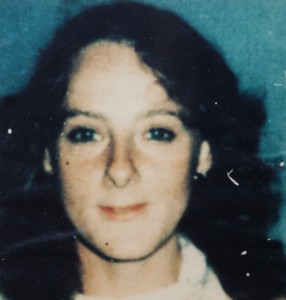 In 1986, aged 24, I did an honours thesis and was obliged to spend ten 30 minute appointments in his office 1-1. If I failed to do this, I would fail my honours year. If I swapped supervisors, I was told I would risk failing my honours year. When Nobody Nowhere was published at the end of 1991, I determined to get a copy to everyone mentioned in it. Chris Eipper featured in it for 1-2 pages, so would be sent a copy. I wrote in Nobody Nowhere:
In 1986, aged 24, I did an honours thesis and was obliged to spend ten 30 minute appointments in his office 1-1. If I failed to do this, I would fail my honours year. If I swapped supervisors, I was told I would risk failing my honours year. When Nobody Nowhere was published at the end of 1991, I determined to get a copy to everyone mentioned in it. Chris Eipper featured in it for 1-2 pages, so would be sent a copy. I wrote in Nobody Nowhere:
“My supervisor… was also sarcastic and at times cunning in trying to combat my evasiveness. He was, I believe, both surprised and amused by the way in which his sarcasm went over my head. Though I was clever in other ways, the subtlety of prompts and jibes was beyond my grasp. He eventually realized this and asked me in no uncertain terms why I was so evasive. He had called me an enigma. I had gone home and looked it up in the dictionary.”
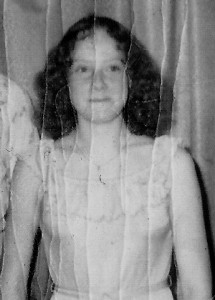 When my first book, Nobody Nowhere, became a major international bestseller, my Australian publisher, Doubleday received a submission from Chris Eipper for his fiction novel he was hoping to get a publisher for. His submission was rejected. I then received a letter from him via my UK publisher (I was now living in the UK) informing me that he was involving himself as a researcher in my case. I also received copies of letters he sent to each of my publishers and to the multitude of journalists who had interviewed me. I also heard from Autism Victoria that he had contacted them to try and discuss my diagnosis with them.
When my first book, Nobody Nowhere, became a major international bestseller, my Australian publisher, Doubleday received a submission from Chris Eipper for his fiction novel he was hoping to get a publisher for. His submission was rejected. I then received a letter from him via my UK publisher (I was now living in the UK) informing me that he was involving himself as a researcher in my case. I also received copies of letters he sent to each of my publishers and to the multitude of journalists who had interviewed me. I also heard from Autism Victoria that he had contacted them to try and discuss my diagnosis with them.
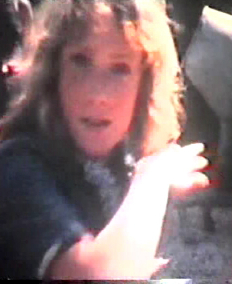 With no qualifications nor clinical experience with which to do so, and no personal involvement with me outside of having once been my honors year thesis supervisor, Chris Eipper was presenting himself as a researcher to put forward his claim that they had all been duped, that I could never have been autistic and was therefore some kind of seriously mentally ill or disturbed person. To back himself up, he had spent a year gathering acquaintances who believed they had known me.
With no qualifications nor clinical experience with which to do so, and no personal involvement with me outside of having once been my honors year thesis supervisor, Chris Eipper was presenting himself as a researcher to put forward his claim that they had all been duped, that I could never have been autistic and was therefore some kind of seriously mentally ill or disturbed person. To back himself up, he had spent a year gathering acquaintances who believed they had known me.
These included Nan Caterina, who mistakenly thought she’d been my grade prep teacher in primary school until shown my school photo with my real teacher for my first three years. There was Marcia Devlin, a student during my Dip Ed in 1992 who had, along with around 80 students, had shared a 1 hr English class with me, once a week for 6 months and who I had already written about in Somebody Somewhere as the rather notorious ‘Vanessa’.
There was Tony Latousis a fellow honours year student among around 30 others and with whom I’d once had a coffee who claimed he had known me for four years but essentially was only a fellow student within an entire Sociology student population during the same years I was, as was Geoff Lyons and neither of whom I remember, that’s how well they knew me.
There was my sociology tutor during my honours year who I had no association with outside of tutorials. There was my psychology teacher from when I did year 12 over a decade earlier in 1982.
Today, had this been online, it could have qualified as cyberstalking.
On Wikipedia, Cyberstalking is identified as involving:
False accusations. Many cyberstalkers try to damage the reputation of their victim and turn other people against them. They post false information about them on websites. They may set up their own websites, blogs or user pages for this purpose. They post allegations about the victim to newsgroups, chat rooms or other sites that allow public contributions, such as Wikipedia or Amazon.com.[5]
Attempts to gather information about the victim. Cyberstalkers may approach their victim’s friends, family and work colleagues to obtain personal information. They may advertise for information on the Internet, or hire a private detective. They often will monitor the victim’s online activities and attempt to trace their IP address in an effort to gather more information about their victims. [6]
Encouraging others to harass the victim. Many cyberstalkers try to involve third parties in the harassment. They may claim the victim has harmed the stalker or his/her family in some way, or may post the victim’s name and telephone number in order to encourage others to join the pursuit.
False victimization. The cyberstalker will claim that the victim is harassing him/her.
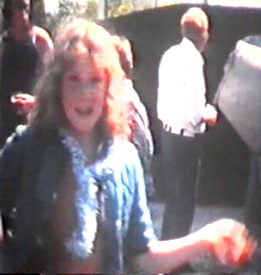 As my second book, Somebody Somewhere also became an international bestseller, his interest in me continued. I continued to hear from media journalists who he had approached and who now wanted me to answer. On the publication of my third book, Like Colour To The Blind, he took his views to Australian journalist, Kathy Gollan at ABC. She too was a journalist who had no qualification with which to diagnose me nor anyone else and had ever met me. In her interview with Chris Eipper she brought in two American psychiatrists by phone link up who were well qualified to diagnose autism, Dr Kathleen Dillon and Dr Fred Volkmar. Problem was they were 10,000 miles away and had never met me. Their views were based solely on reading my autobiography in the early 90s when it was believed that over 70% of people with autism were severely mentally retarded. The qualification to diagnose someone with autism or professionally challenge a diagnosis depends on at least three things:
As my second book, Somebody Somewhere also became an international bestseller, his interest in me continued. I continued to hear from media journalists who he had approached and who now wanted me to answer. On the publication of my third book, Like Colour To The Blind, he took his views to Australian journalist, Kathy Gollan at ABC. She too was a journalist who had no qualification with which to diagnose me nor anyone else and had ever met me. In her interview with Chris Eipper she brought in two American psychiatrists by phone link up who were well qualified to diagnose autism, Dr Kathleen Dillon and Dr Fred Volkmar. Problem was they were 10,000 miles away and had never met me. Their views were based solely on reading my autobiography in the early 90s when it was believed that over 70% of people with autism were severely mentally retarded. The qualification to diagnose someone with autism or professionally challenge a diagnosis depends on at least three things:
A) they are actually formally qualified in the first place (ie Doctorate in Psychiatry or Psychology),
B) they have actually met and spent time with the person they are diagnosing and
C) that time has been spent in a therapeutic setting and sufficient DSM based testing having been fully carried out with the individual being diagnosed.
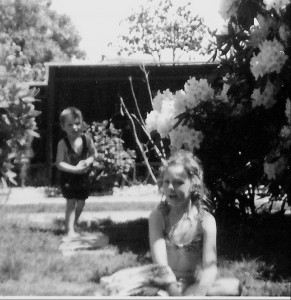 Chris Eipper had no qualification to diagnose, the time spent in his office was hardly diagnostic and he has never been in a therapy role with me. Dr Dillon and Dr Volkmar may both have qualifications but these amount to no qualification to diagnose me if they’ve never met me. They were being asked theoretical questions in a radio interview based only on reading a person’s account and were giving opinion about an individual they had never met.
Chris Eipper had no qualification to diagnose, the time spent in his office was hardly diagnostic and he has never been in a therapy role with me. Dr Dillon and Dr Volkmar may both have qualifications but these amount to no qualification to diagnose me if they’ve never met me. They were being asked theoretical questions in a radio interview based only on reading a person’s account and were giving opinion about an individual they had never met.
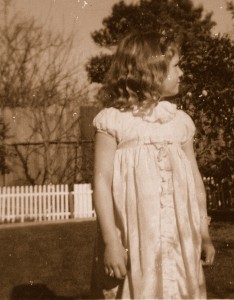 By May 2009, I had sustained over a decade of the the general public recirculating and rehashing that ABC interview as ‘proof I was never autistic’ and the wide range of associated hate mail, hate pages, even the constant sabotage of my reputation on Amazon and Wikipedia, I did email both Dr Dillon (Western New England University) and Dr Volkmar (at Yale University) asking them on what basis they had felt professionally qualified to diagnose someone they had never met.
By May 2009, I had sustained over a decade of the the general public recirculating and rehashing that ABC interview as ‘proof I was never autistic’ and the wide range of associated hate mail, hate pages, even the constant sabotage of my reputation on Amazon and Wikipedia, I did email both Dr Dillon (Western New England University) and Dr Volkmar (at Yale University) asking them on what basis they had felt professionally qualified to diagnose someone they had never met.
Dr Volkmar responded immediately.
I am happy to say the following:
I have not personally met you and was asked only to comment on information provided to me and that my comments indicated that this was an unusual history for a person with autism. There is a wide range of functioning among individuals on the autism spectrum and they can have unusual histories.
If this is helpful to you feel free to post it on your web site
Fred Volkmar
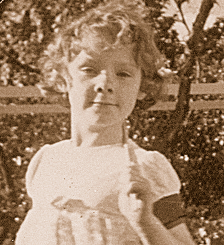 But still, critics watered down his response and continued to invest in the fact Dr Dillon had never responded, never taken back her apparent professional rubber stamping that I was a fraud. Finally, three years later in May 2012, Dr Dillon did respond:
But still, critics watered down his response and continued to invest in the fact Dr Dillon had never responded, never taken back her apparent professional rubber stamping that I was a fraud. Finally, three years later in May 2012, Dr Dillon did respond:
Not having ever met you in 1996, I was giving my opinion to questions posed to me in a radio interview based on what I had read by and about you at that time. I did not presume to have been able to provide you with a diagnosis. Much has changed in the field of autism from 1996 to 2012. Although it remains the same that I have never met you and can only offer you, as before, my opinion. In my judgment today, your presentation then and now is much more consistent with those who currently identify themselves as on the autism spectrum.
Sincerely, Kathleen Dillon
TAKING ‘SHIT’ AND MAKING ‘SCULPTURES’
As a Taoist, I find the positives in otherwise negative experiences. Had Chris Eipper not started his campaign, I would probably not have continued to write books after my third one. Instead I have ten published books including 4 text books used in training in special education and psychology courses around the world. Without the hatred, mistrust and controversy he fueled, I would perhaps not have put all my energies into the consulting work I did since 1996, having now worked with over 1000 families of children on the autism spectrum in countries around the world. Without the attacks on my character, I would probably not have worked so hard to focus on what use I could be to the world. Without the media interest he flamed into existance, we would not be able to look back at how archaic we were and how far we’ve come in terms of awareness about autism, the now laughable presumptions and stereotypes that surround it. Without a new computer generation inspired to carry forward a Chinese whisper they have no idea of the origin of, I’d probably not have continued to have so many readers now over two decades since my first book came out. Without curiosity seekers still looking up ‘Donna Williams controversy’, I would never have disclosed so much personal diagnostic detail and complete pictorial history which has benefited the autism world as one of the most complete online diagnostic and pictorial histories of any well known person diagnosed with autism. For these things, I thank my critics, for the ‘shit’, and for the ‘sculptures’ I made from it.
MY COMPLETE DIAGNOSTIC HISTORY:
BEFORE AGE 2
I was born in 1963. My paternal grandparents, who lived with us until I was 4, were my primary carers. My paternal grandmother was the child of a first cousin marriage. Her own two grandfathers were brothers and her two grandmothers were mother and daughter. So I was a product of inbreeding with the talents and challenges that perhaps come with that.
I understand my mother had been a heavy drinker and smoker for several years before I was born and was still so when I was born. I understand that my mother had taken Quinine twice before I was born in two failed attempts to cause abortion. I had Colic and by six months of age had Rickets, jaundice and recurrent infections.
EARLY INTERVENTION
From 6 months old (early 1964) until 2 and a half years old (early 1966) I was in a Community Welfare run program under the care of Sister Jellie. In the 60s, it was called Northcote Day Nursery, was one of only 8 Day Nurseries in Melbourne, was government funded, required a referral from a social worker and served at risk children. The children were there Monday-Friday during working hours and home weekends. Today it is a typical modern day care centre with no direct connection to Welfare services.
DIAGNOSED PSYCHOTIC AT THE AGE OF 2
In the 1960s autism was known as ‘childhood psychosis’.
Around 1965, aged two and a half, I was diagnosed as psychotic after a three day hospital observation at St Elmo’s Private Hospital in Moreland, Victoria. According to my father I had been admitted to explore whether I was deaf (I had no blink response to loud noises) and whether I had leukemia (I had repeated infections and jaundice since 6 months of age) and why I had no pain response (I had had a stomach tensing and compulsive coughing tic that compelled me to the point I was coughing specks of blood).
PRESCHOOLS:
Around 1966, I attended a creche at the Royal Women’s Hospital in Carlton when I was around 3 years old. Perhaps because my mother had been sectioned around that time. Perhaps because it was a follow on from the diagnosis at St Elmo’s.
From 3 and a half to 4 years old I was at a private kindergarten called Gilmer College in Preston which had a reputation at the time for taking children with special needs.
PRIMARY SCHOOL
I began at a mainstream inner city primary school in 1969 and after the first week was selected for a specialised class. It was called the Country Infant Room, designed to teacher city teachers to teach in small country schools. It took only 6 children my age (22 children in total) and involved having the same teacher and same classroom for 3 years.
Throughout primary school in the 70s, I was regularly assessed by Psych and Guidance teams (school psychologists) and learned I had been formally labeled emotionally disturbed (in my school records).
HEARING TESTS THROUGHOUT CHILDHOOD
With regular ear, nose, throat, lung infections I was intermittently tested for deafness up until the age of 9 when my language processing disorder was finally understood. This diagnosis was later reconfirmed in my early 40s by audiologist, Dr Leslie Tan.
THE WORD ‘AUTISM’
In 1973, when I was 10 years old a teacher (who taught at Thornbury Primary school at the time) named Christine had been at one of my family’s 1970s parties. Fleeing the violence that erupted there by the early hours, she found me in the street. She beckoned me into the car and took me home overnight. According to my father, after returning me the next day, she had raised the word autism with my family. Though I’d already been diagnosed as psychotic at the age of two, the actual word ‘autism’ was not used then because autism was merely ‘childhood psychosis at that time. By the time people were now rewording childhood psychosis as ‘autism’ by 1973, saying ‘your child is autistic’ was a very accusative thing to say to a mother. The first popular ‘autism movie’ had come out in Australia in 1971, an Elvis film called Change of Habit (1969) in which the girl’s autism is attributed to supressed rage at her mother (psychoanalytic perspective still common in some parts of Europe today). In spite of this teacher’s suggestion, I continued to be more conveniently referred to as ‘disturbed’ until my 20s when my original diagnosis as ‘psychotic’ at age 2 was now reconfirmed but with the more modern term of ‘autism’.
ACQUIRING FUNCTIONAL SPEECH
Around age 10 (1973) I was also put onto Zinc, vitamin C and multivitamin-minerals and moved onto eating whole meals. It may be I was one of the first people with diagnosed with autism to be treated with vitamin therapy as well as antiinflammatories for juvenile rheumatism (after regularly body slamming my arms and shoulders and punching my legs) and sedatives for chronic anxiety (which I remained on to age 17). As a result of the changes implemented at age 9-11 my receptive language went from 10% to around 50%, which was enough to begin learning to understand and to use functional speech instead of stored phrases, TV scripts and echolalia.
COGNITIVE TESTING AT AGE 26
In 1965, my diagnosis at age two of ‘psychotic’ came about through three days observation in a hospital. There was probably no cognitive testing at that time. The diagnosis would likely have been purely observational. In 1991, now in my 20s, I had enough skills to participate in formal testing which ascertained my strengths and deficits and whether these indicated the kind of information processing patterns seen in people with autism. This was done by educational psychologist Dr Lawrie Bartak, one of Australia’s leading autism experts, from Melbourne’s Monash Medical Centre at Monash University. He also spoke with and met with those who had had significant involvement with me as a child. I spent 16 months seeing him regularly as a therapist and also met with a team of his colleagues and students at the Monash Medical Centre and allowed them to extensively question me about my experiences. With 40 years experience in the Autism field, Dr Bartak was recently awarded Autism Victoria’s Exemplary Service Award in their 2008 Autism Recognition Awards.
I did not approach Dr Bartak for a diagnosis. I sought to meet others with autism, particularly those who like me had been assessed as psychotic or disturbed as toddlers in the 60s, most of whom were institutionalised in those days. He told me he could help me so I met with him at the Monash Medical Centre. I was surprised when his version of helping me was to do cognitive tests. My IQ was apparently under 70, in the range deemed mildly mentally retarded (yes, I already had an Hons degree and was doing a Dip Ed). However this was made up of extremely high scores on some tasks (pattern related abilities non-autistic people usually don’t have), extremely low one’s on others (associated with visual and verbal processing). I asked what his tests showed. He told me they showed him I was autistic. I asked how could he be sure I wasn’t just crazy. He said a crazy person wouldn’t produce these kind of results. In other words, this professional reconfirmation of my autism was accidental.
DID HE MEET ANYONE WHO’D KNOWN ME SINCE CHILDHOOD?
Dr Bartak met with the Paternal aunt who had been deeply involved with me since birth (she was the one who was going to adopt me, had fed and changed me since birth and was regularly involved with me until I was 15, so she was fairly reliable to discuss my history). He also spoke extensively with my primary school teacher, Mr Frank Ryan, who by then had become Principal at the school he was teaching and managed special needs for his region. He also met with Mrs Pauline Turzi (previously Pauline Cowie), the wife of my father’s best friend, Bill Cowie. Pauline had known me from age 7-13 and often saw me weekly or monthly during these years. She insisted that I “didn’t speak”. I knew I sang and did advertisements and long strings from TV shows, so contested this. She replied, “yes, you muttered to yourself but we couldn’t understand youâ€.
I grew up dealing with severe abuse at the hands of a personality disordered alcoholic who may have had some elements of AS. As such, I had left home into homelessness by my teens and had obvious Post Traumatic Stress Disorder in addition to my autism related challenges, Because there were others he could interview about my childhood development, learning and behaviour, Dr Bartak had no reason to meet with my abuser. My father, who had not abused me, lived 3 hours from Melbourne and died before Dr Bartak could meet him. Dr Bartak did later meet my brothers.
DID MY FAMILY AGREE TO MY PUBLISHING NOBODY NOWHERE?
Before publishers could publish my first book, Nobody Nowhere (which is a detailed account of my early history and childhood) I had to have ‘quit claims’ signed by all adult members of my family who were featured in that book. This required them to receive a copy of the manuscript to read and sign a waiver agreeing not to legally contest the publication. If they wished to block the book’s publication they need only have refused to sign the quit claims. Quit claims were signed by my mother, my father and my older brother, meaning that all had read and accepted my right to publish my account.
Signed written interview testimony was also gathered from my aunt about the validity of my account as well as a friend of the family who had known me since I was three years old and both were gathered by the lawyer at the time and are kept as legal records of the validity of my account.
OTHER AUTISM PROFESSIONALS WHO HAVE PERSONALLY SPENT TIME WITH ME
I have met autism experts and leaders in the field the world over. Among these have been Bernard Rimland, Lorna Wing, Judith Gould, Pat Howlin, Rita Jordan, Tony Attwood, Doug Biklen, Rosemary Crossley, Patrizia Cadei, Adam Feinstein .
The first person to have read Nobody Nowhere was Dr Sebastian Kraemer, a Consultant Child and Adolescent Psychiatrist at the London hospital I was temping at in 1990. The manuscript made no mention of autism and was originally titled “Dolly; Autobiography of a Disturbed Child”. I picked him at random, wanting any child psychiatrist to finally tell me ‘what kind of mad this was’. He passed it on to his mentor, Francis Tustin, a pioneering psychotherapist and author who worked with those with autism from the 1950s onwards. Francis Tustin passed the book to her publisher who sent it on to UK agent Hilary Rubinstein around 1991 from where it went on to become published as an international best seller.
IS THERE AUTISM OR RELATED ‘FRUIT SALAD’ IN MY FAMILY?
ADHD, Dyslexia, bipolar, Asperger’s and autism have all been diagnosed on my father’s side of the family as does Coeliac and diabetes. My father had literacy problems, his usual mode was hyperactive, hypomanic, flighty and exuberant. He had times he resembled Gene Wilder as Willie Wonker and with flashing eyes he would tell you he was Elvis or Jesus, that he could cure cancer or hypnotise animals. At other times he would become darkly crazy like Jack Nicholson in The Shining. He was medicated with Valium and Tryptanol. He died at 59 from cancer of the pancreas, liver and bowel so I never got to ask him much about these states but I think he may have fitted dyslexia, rapid cycling bipolar and ADHD.
On my mother’s side there is OCD, Agoraphobia, addiction and alcoholism, depression (and several suicides), rage and a vast history of ulcerative colitis and a strikingly high cancer rate (particularly bowel cancer and lymphoma).
COMPLETE LIST OF MEDICAL INFORMATION
In addition to language processing disorder and autism other diagnoses over the years included
CHILDHOOD
to 6 MTHS (1963): Signs of Rickets. Had Jaundice, Colic, recurrent infections (recurrent infections and regular antibiotics continued to age 26).
2 YRS (1965): In a 3 day hospital assessment at St Elmo’s Hospital, Moreland – tested for but cleared of Leukemia (had bleeding gums, losing eyelashes, easy bruising) and deafness, diagnosed instead as Psychotic (Autism was deemed Childhood Psychosis in the 60s)
2-3 YRS (1966): Contracted measles and mumps (no MMR in those days) at age 2-3. In my 30s I was diagnosed (again) with measles which returned and flare up every 6 weeks for 10 months. I’m told I had probably never rid them since childhood and that finally my immune system was beginning to try and clear the virus from my system.
3 YRS (1966): Drowned twice, once at the City Baths (rescued by two old women), once at a motel swimming pool (rescued by my then 5 year old brother).
PRIMARY SCHOOL (1969-1974): Assessed as ‘Disturbed’ by visiting Psych and Guidance team at Primary School (on school records).
9 YRS (1972): Tested for deafness again in late childhood. Diagnosed with Language Processing Disorder.
9 – 11 YRS (1972-74): was the second shortest girl in my school at age 9 (may have been 3ft 3″ as I remember being 3ft 3″ in grade 3), so was put on zinc, C, multivitamin-minerals. As a result of grew to 61 inches (5ft 1″) by age 12 with associated severe bone and joint pain. Then diagnosed with ‘Juvenile arthritis’ and put onto pain killers/anti-inflammatories for the next 6 years.
9 – 11 YRS (1972-74): Medicated for chronic anxiety, sleep and behavior problems.TEENS-ADULTHOOD:
Gut/immune/metabolic disorders
(1979) First aware of diagnosis of white cell deficiency
(1988) Diagnosed with and treated for CIN3 (Cervical intraepithelial neoplasia)
(1989) Diagnosed with Gluten, salicylate and phenol intolerance, severe casein allergy,and multiple food and chemical allergies, severe reactive hypoglycemia, severe magnesium deficiency, CFS/Fibromyalgia/ME
(2001) diagnosed with mild functional B12 deficiency
(2001) Tests revealed 5 times the high level of inflammatory cytokines (IL5), also high levels of Quinolinic Acid, both apparently indicative of ‘low ATP and poor cell mediated immunity’.
(2001) Saliva swab sent off for genetic testing, revealed a marker associated with tendency toward systemic inflammatory responses and told this underpinned my immune and auto-immune disorders.
(2001) Diagnosed with IgA deficiency (0.13)
(2006, 2010) Treated for skin cancers
(Sept 2009) Diagnosed with Haemophilus (lasted 7mths), IgG2 deficiency and low blood levels of vitamin D (in spite of sunshine, vit D supplements, omega 3s and a diet rich in chicken/fish)
(Feb 2010) Overcame Haemophilus, vaccinated to all encapsulated bacteria and put on prophylactic (life long) Doxycycline 50mg
(March 2011) IgE results indicated allergies to wheat, soy, peanut (legumes). A month later able to have goat/sheep casein without allergic/gut reactions for the first time in 20 years. My diet became free of legumes, sugar, gluten, cow’s milk free and is low salicylate.
(June 2011) Diagnosed with breast cancer and underwent double mastectomy and chemotherapy. During chemotherapy I became severely neutropenic (0.00 neutrophils and put onto Neulasta) and deficient in all 4 IgG subclasses. I also encountered troubling complications (urinary retention, gastroparesis, tachycardia, hypo and hyper thermia, trouble swallowing, hypoventilation, syncope, blurred vision) that the oncologist and GP felt were due to Dysautonomia (thought related to pre-existing brain injury being aggravated by the chemotherapy).
(Jan 2012) MRI following severe sciatica and associated temporary partial paralysis showed several abnormalities thought possibly associated with D deficiency in childhood and associated immune/autoimmune disorders. Later assessments of my right leg support the view I had had D deficiency related development problems in infancy and early childhood. Diagnosis was spinal stenosis due to degenerative processes effecting the spine and compressing the spinal cord. I was referred to a neurosurgeon but have so far managed to delay surgery and hope to put it off for as long as possible.Neurological/sensory perceptual disorders
(1985) EEG showed atypical epilepsy (described as a ‘highly marked central abnormality’).
(1990) Early childhood diagnosis of autism reconfirmed by autism expert Dr Lawrence Bartak, Monash Medical Centre.
(1992) Diagnosed with a visual perceptual processing disorder.
(2007) Mid childhood diagnosis of Language Processing Disorder reconfirmed by audiologist, Leslie TanPsychiatric disorders
(1979) One-off appointment with a hospital psychiatrist age 16 after attempted suicide. Then voluntarily returned there as an outpatient for counseling aged 17-18 (1980).
(1996-2002) Treated for co-occurring mood, anxiety, compulsive disorders including PTSD age 36-39.
(2011) following going legume free due to IgE soy/peanut allergies, CNS issues were so reduced was able to come off Seroquel 25-50mg with no complications.
(2010) During a medication review, aged 46, I was diagnosed with the Dissociative Disorder of DID (Dissociative Identity Disorder). DID is NOT A PERSONALITY DISORDER. It is listed in the DSMV as a condition within the spectrum of DISSOCIATIVE Disorders on the same spectrum as Post Traumatic Stress Disorder (PTSD) and can occur in any severely traumatised human being alongside any Developmental Disability or health condition they already have.“Dissociation can be defined on a continuum. On one end try to imagine yourself driving down the highway. Suddenly you have arrived at your destination but you cannot recall how you got there. This is a form of mild dissociation and everyone does this. On the opposite end you would find dissociation defined as multiplicity which is now known as DID (Dissociative Identity Disorder). DID is not an illness nor is it a disease. The individuals that have been diagnosed with this disorder are not crazy. They are survivors of severe childhood trauma and the long-term effects have caused these individuals problems on how to process current information and react to everyday life”. (from PsychCentral.com)
RETIREMENT
Having been a lecturer since 1994 and an autism consultant since 1996, yesterday I announced my retirement. I will continue to do e-consulting and e-lectures and I would like to thank my supporters and my critics for the journey.
Donna Williams, BA Hons, Dip Ed.
Author, artist, singer-songwriter, screenwriter.
Autism consultant and public speaker.
http://www.donnawilliams.netI acknowledge Aboriginal and Torres Strait Islander people as the Traditional Owners of this country throughout Australia, and their connection to land and community.

So sorry to see you retiring Donna.
Over a long period of time you have gifted many persons on the Spectrum and their families with your insight, understanding and genuine caring and compassion regarding living with Autism.
The times we have communicated and connected (face-to-face) have been wonderful. The sister-hood is still as strong as ever, though we haven’t caught up for some time.
Hope you are well and still as cheeky as ever 🙂
Best wishes, Louise 😉
Hi Donna
Sorry to hear you are retiring from everything but e consulting and e lecturing.
On the other hand very relieved to hear you will continue to help people in the best way you know how
There will always be haters and critics but they only do it because you appear too confident in who you are( the tall poppy syndrome))
You are a special person that needs to be treasured !!!!
It’s sad you have had to fight your whole life but you have been able to make it work to your advantage where possible.
Thank you for sharing yourself and your experiences with us !!!!!!!!!!!!
Hi Donna,
I think this gets to something I have heard neurodiversity types say.That is,if you can treat it,and see improvement,it isn’t “real” autism.
That’s bulls**t plain and simple.
When I was finally diagnosed with autism,like a lot of autistics our age,I had a lot of other diagnoses as a child,but not autism.I was given a diagnosis more severe than Asperger’s,but not as severe as Autistic Disorder.I was also diagnosed with a severe nonverbal learning disorder .At the time I got my autism diagnosis,the developmental psychiatrist was going to put me in a group home,right then and there.My mother stepped in to keep me out.
Like you,I have a lot of medical issues,that greatly impact both my health,and my autism.Like you,I have had to struggle long and hard to gain what I have.This does include rickets,and celiac that started as a baby.Your problems are autoimmune.Mine are metabolic.You probably would not be surprised if I told you I had a few serious regressions as an adult.I spent a number of years trying to find the cause for my problems.I eventually learned I had at least three different metabolic disorders,all related to folate and homocysteine.Last December,I finally learned I have one of those “new” types of cerebral folate deficiency unique to autism.I started on high dose leucovorin,and the results were incredible,both for my medical problems.
Three months later (April 2012) my mother,who I had lived with,died.Somehow the hospital had found out I had an autism diagnosis,and how severe it was.Once again I faced going into a home,and having no say in the matter.Two things happened,my landlord,who has an autistic son,came to my assistance,but more importantly,the case worker saw the improvement from the leucovorin,and that was what kept me out of the home.
In which parts of Europe the psychoanalytic perspective you mention is common?
I’ve been working in the ASD field for several years and have not heard of that. Except when reading the history, of course.
particularly France, less so but still happening in Italy.